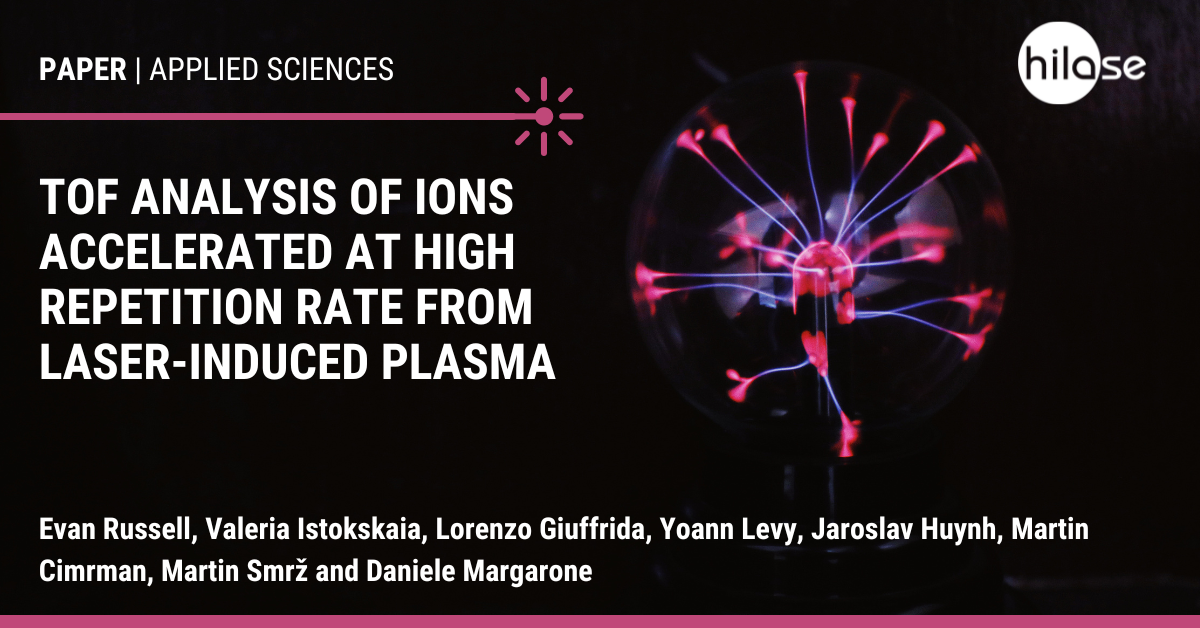Our colleagues Yoann Levy, Jaroslav Huynh, Martin Cimrman and Martin Smrž together with researchers from Centre for Plasma Physics (UK), ELI and Faculty of Nuclear Sciences and Physical Engineering at CTU have recently published a paper in the journal of Applied Sciences (MDPI). The topic of the paper is TOF Analysis of Ions Accelerated at High Repetition Rate from Laser-Induced Plasma.

The generation, detection, and quantification of high-energy proton spectra that are produced from laser-target interaction methodologies is a field of increasingly growing popularity over the last 20 years. Generation methods such as target normal sheath acceleration or similar allow for collimated laminar ion beams to be produced in a compact environment through the use of short-burst terawatt lasers and are a growing field of investment. This project details the development and refinement of a python-based code to analyze time-of-flight ion spectroscopy data, with the intent to pinpoint the maximum proton energy within the incident beam to as reliable and accurate a value as possible within a feasible processing time. TOF data for 2.2 × 1016 W/cm2 intensity laser shots incident on a 2 mm Cu target that were gathered from the PERLA 1 kHz laser at the HiLASE center were used as training and testing data with the implementation of basic machine learning techniques to train these methods to the data being used. These datasets were used to ensure more widely applicable functionality, and accurate calculation to within 1% accuracy of an assumed correct value was seen to be consistently achievable for these datasets. This wider functionality indicates a high level of accuracy for previously unseen TOF datasets, regardless of signal/noise levels or dataset size, allowing for free use of the code in the wider field.
Read the full article.








